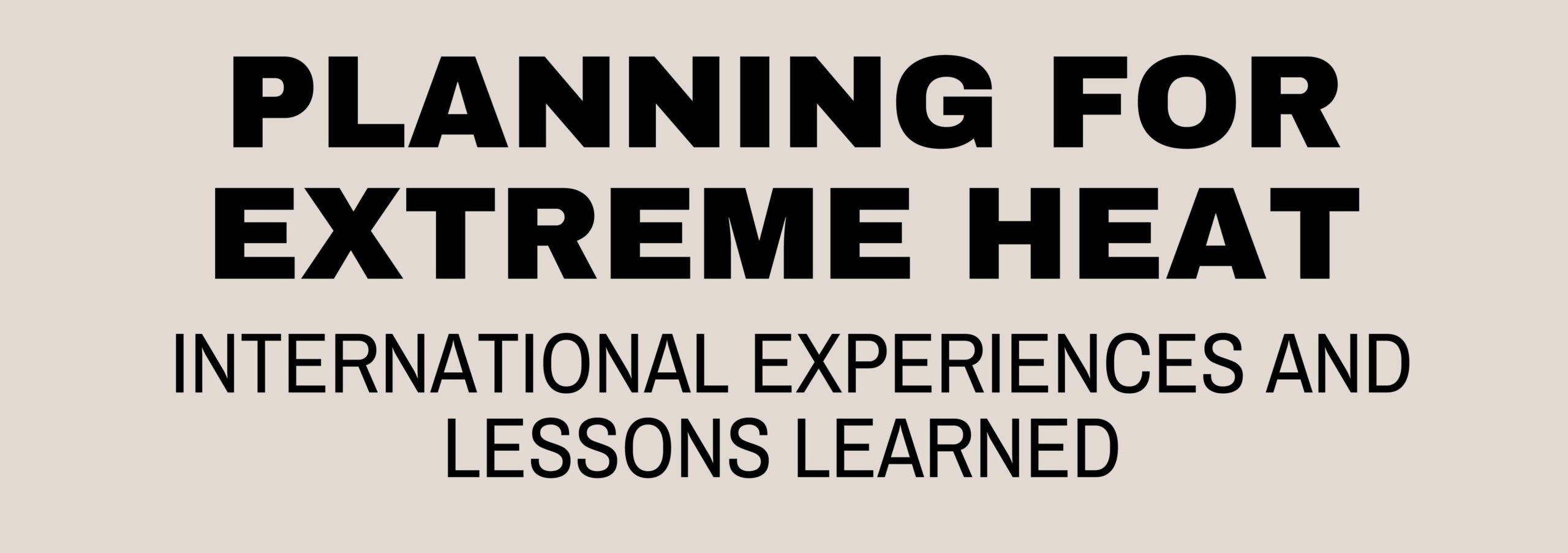
By Owen Gow, Associate Director, Arsht-Rock; Lenio Myrivili, Global Chief Heat Officer, UN-Habitat & Arsht-Rock; Bushra Afreen, Chief Heat Officer, Dhaka North; and Mihir R. Bhatt, AIDMI, India
On the 19th formation day of the NDMA, HOISA presented its fourth-panel discussion on observing heatwaves. In continuation with previous work, this edition focused on the planning for extreme heat.
The increasing intensity of heat waves combined with other crises such as air pollution, floods and cyclones, create a cascading effect on vulnerable populations such as labourers, migrant workers, and women. Two ongoing, distinct, examples of heat-wave mitigating efforts in Dhaka North and Athens were brought forward.
Dhaka North
Recently, Dhaka North became the first city in Asia to appoint a Chief Heat Officer (CHO) by the Mayor of Dhaka North City Corporation. This initiative is a result of Adrienne Arsht-Rockefeller Foundation Resilience Center’s Global Champions for Heat Action platform. Bushra Afreen, the appointed CHO highlighted that heatwave-related conversations are often missing at the city level with no specific funding mechanism. The official appointment of this position therefore enabled advocacy for more investments, resources and attention for resilience work in the city.
Dhaka has several organisations and entities working in silos with different communities of varying needs. The CHO’s position particularly focuses on this gap and aims to create interventions that are inclusive by working with the municipality and other agencies. The challenge is that one needs empirical and scientific data that provides the necessary knowledge to set priorities. The CHO is now facilitating the installation of air quality sensors, heat sensors, and humidity sensors to allow for data collection.
In the near future, their city-wide application – Shobar Dhaka will integrate cooling hubs into the city map, along with guidelines for heatwave periods, warning systems, and mechanisms to report or flag a problem. Dhaka is also set to see its first urban forest, with diverse local species. All these projects are aimed at being sustainable and shall create a circular economy providing employment.
Athens
Athens is one of the hottest capitals in Europe and is affected by increasing intensity and frequency of heatwaves, fires, floods and droughts. More than 80% of the city is covered with hard surfaces with unevenly distributed green cover.
Lenio Myrvili, Global Chief Heat Officer to UN-Habitat and former Deputy Mayor in Athens shared that one of the first attempts to tackle this crisis was to create a heat map of the city by using land surface temperatures. Their research directly linked land surface temperatures with mortality.
Followingly, the city adopted a 3-step strategy to combat heat: Awareness raising, preparedness and redesign. The awareness-raising initiatives dealt with creating campaigns, convincing policy and decision-makers, and communicating about the invisible nature and impact of heat waves. One of the projects was to categorise heatwaves by linking meteorological data (heat) with its impact on health. Similar algorithms are also being generated for other cities, to then deduce categories of heatwaves.
Based on the categorisation of heatwaves, appropriate action and preparedness measures are opted for such as early warning systems, mass messaging, cooling stations, etc. And lastly, the city is studied with the intention of adapting it to face extreme weather. Today’s cities are badly designed for climate change as they trap the heat and humidity within the city. “We must think of redesign to facilitate cooler and greener environments”.
But as we present case studies and solutions that some cities are opting for, how must other cities, stakeholders and even individuals act and begin implementing some of these ideas in their local contexts?
The Heat Action Platform is a repository of various articles, strategies, case studies and resources on how learnings from different cities and regions of the world can be effectively communicated to inspire action for creating resilient cities. With this platform, any individual, practitioner, or government authority can feed their research and practice. HOISA therefore urges its readers and network to explore this platform to make this effort into a movement led by each individual in combatting extreme heat and weather.
Disclaimer: The views expressed in this piece are those of the author/s and do not necessarily reflect the views or policies of AIDMI.